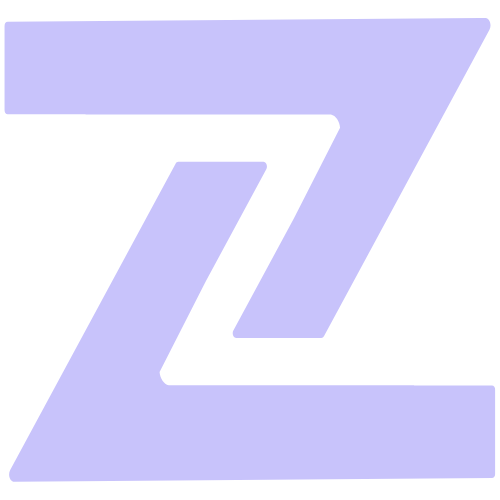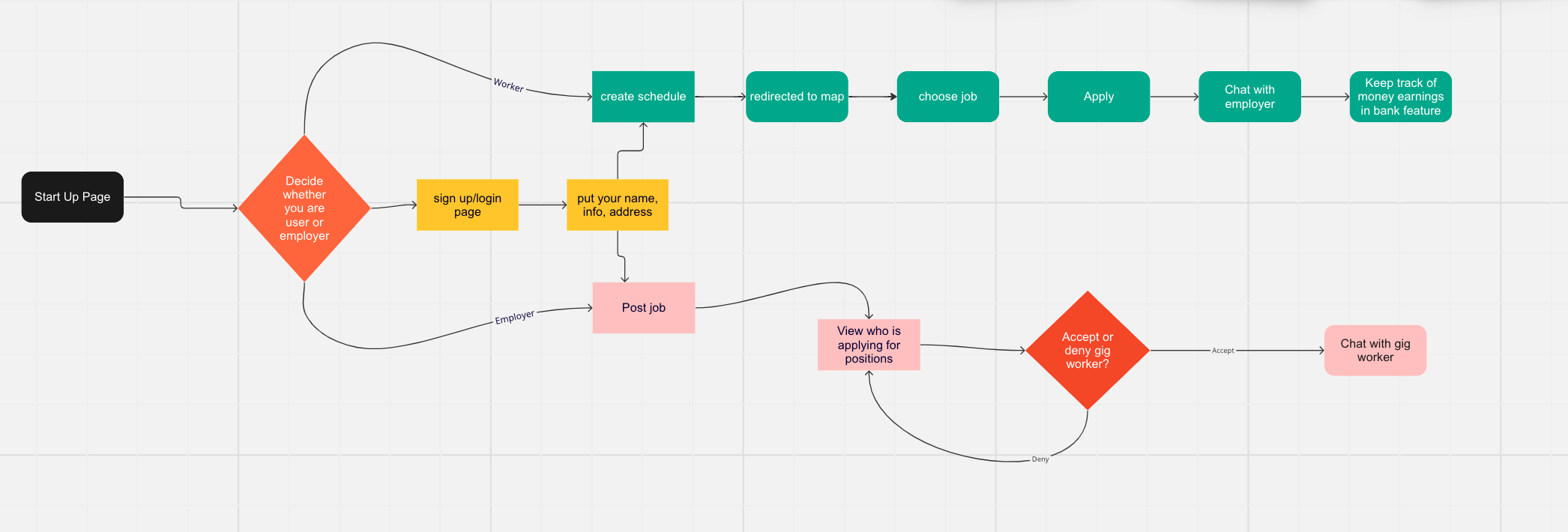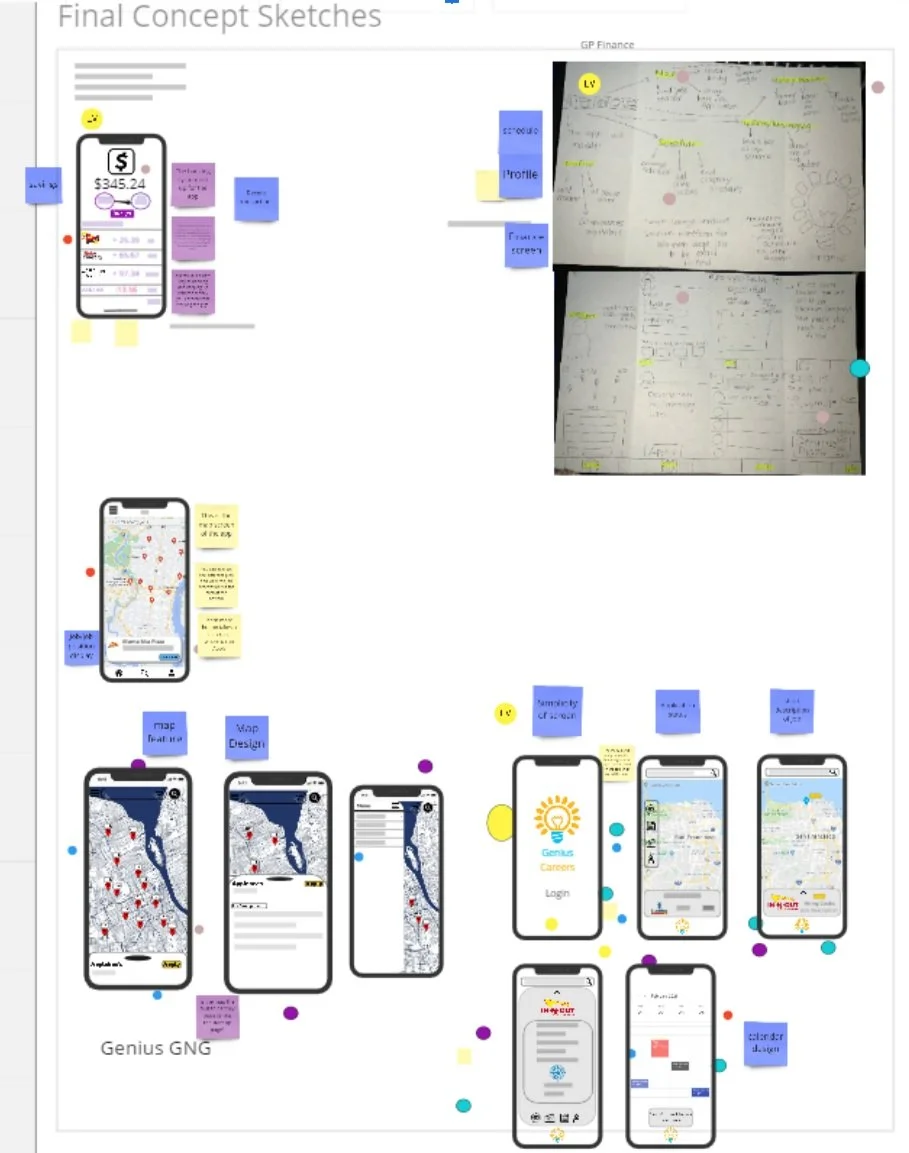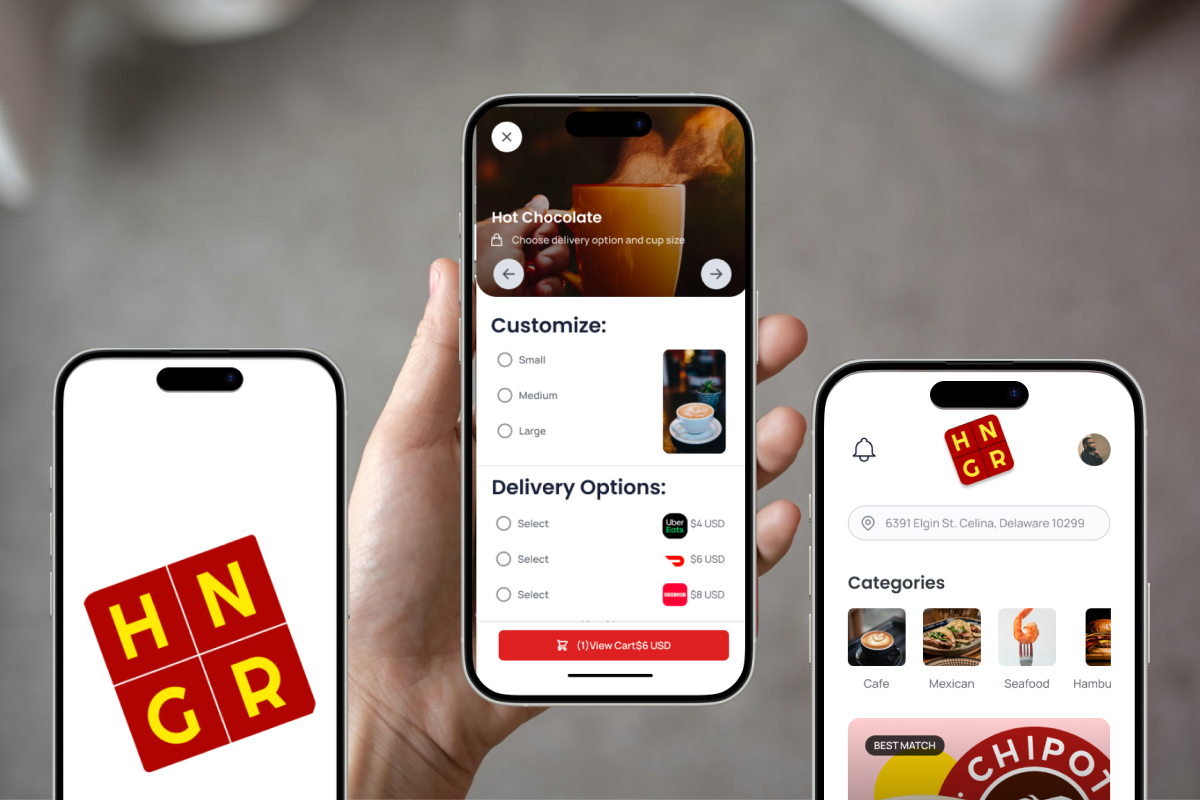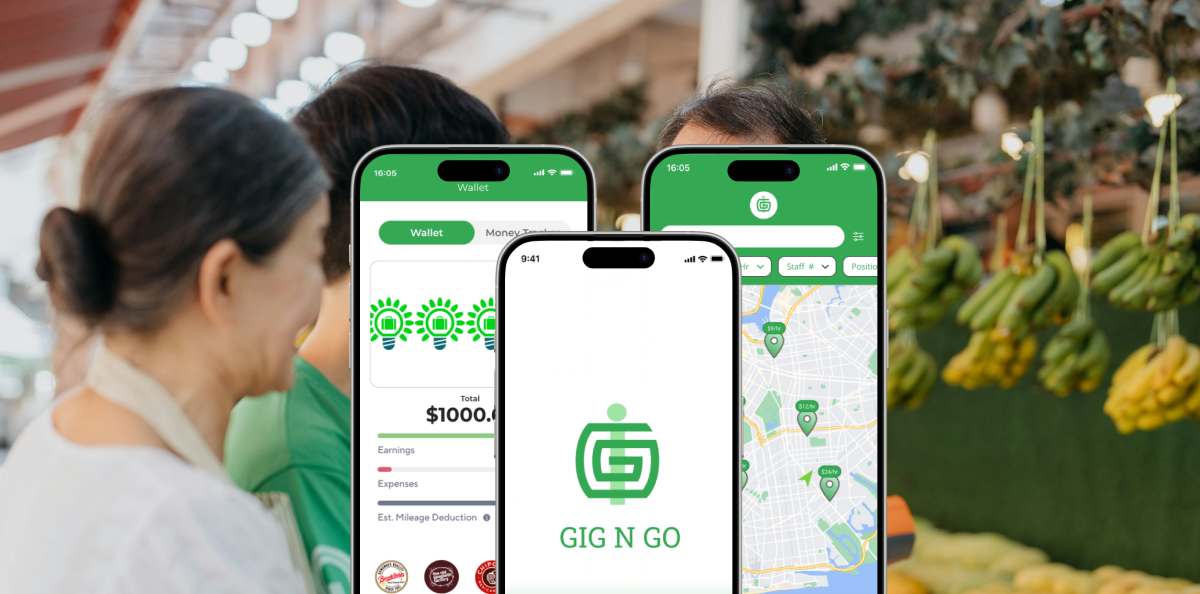
🛠️ Project In Progress
This project is currently being updated to match the style and quality of my other case studies. You’re welcome to explore it, but please note it’s not yet fully refined. Thanks for your patience!
Genius Plaza UX Design Internship
Project Duration
June 2021 - July 2021
Role
I was a UX/UI Design intern for a company called Genius Plaza. Genius Plaza was the first multicultural education platform built for diverse communities.
Team
Collaborated on an intern pod of 3 and worked with product managers and developers.
The Problem
In the post-COVID world, both students and small restaurant businesses struggled: students needed temporary jobs to maintain financial stability, while restaurants were facing staffing shortages. Traditional hiring systems were inefficient for such temporary and urgent needs.
The Goal
The goal was to create an intuitive, user-friendly mobile app that addresses these pain points by enabling students to find flexible jobs and restaurant owners to easily fill temporary staffing gaps.
My Role
Position: Intern UX Designer
Responsibilities:
• User Research
• Wireframing & Prototyping
• Usability Testing
• UI Design
User Research
We conducted interviews with both college students and restaurant owners to understand their specific needs The insights we gathered helped to identify key challenges and opportunities for improvement. Below is a summary of the feedback and how it was interpreted.
Target Audience
We conducted qualitative user interviews with our target audience including:
Students: Primarily college students (ages 18-24) who were seeking flexible job opportunities to balance with their academic schedules.
Employers: Small business owners, particularly restaurant managers, who were looking for reliable, short-term staffing solutions to fill temporary positions.
What We Found
Students of about 80% reported struggling to find flexible jobs that could fit into their busy and inconsistent schedules.
Employers (75%) needed a more efficient and reliable way to hire gig workers without going through extensive processes.
Key Pain Points
Students:
80% found it difficult to locate quick, flexible job opportunities in line with their availability.
70% noted that managing multiple short-term jobs and payments required significant manual tracking, adding to their workload.
Employers:
55% found it challenging to find reliable, background-checked workers for temporary roles.
75% highlighted unpredictability in the hiring process, which created stress during high-demand periods.
Personas
A small restaurant owner, who needs a way to hire temporary staff to fill in shifts but doesn’t have the resources for long hiring processes.
Chris
A college student, who needs a quick way to find temporary jobs that fit her school schedule because she needs to make money between classes.
Sarah
How Might We
Building on our research insights, we established a clear guideline to steer us into the next phase of our design process. To focus our efforts and set a concrete direction, we formulated a critical “How Might We” question:
How might we assist students in finding temporary jobs quickly to provide financial support and boost employment rates amidst the COVID-19 job crisis, through an intuitive mobile app?
Design.
Brainstorming
Scheduling
Users set their availability
Map View
Users can view the jobs available in their area.
Filter what you would like to see on the map based on your schedule, distance, etc.
Banking
A built-in payment system allows users to manage their earnings.
Employer Perspective
To allow the prototype to come full circle, I felt that it was important to illustrate the use of the app from the employers’ side. This included:
An onboarding process and some of the features provided differentiate them from the job seeker.
Employers can post job openings and view who is applying.
The employer payroll also gives them access to providing easy payment for their GNG workers.
Flow Charts
We developed a flowchart that demonstrates the ease of signing up, setting a schedule, viewing available jobs, and managing earnings.
Employers have a similarly streamlined process for posting jobs and reviewing candidates.
Concept Sketches
The initial concept sketches explored the flow of both students and employers interacting with the app. The designs focused on:
• Ease of use in applying to jobs.
• A map-based UI for finding nearby jobs.
• A streamlined interface for employers to post gigs and manage candidates.
Wireframing
To bring the concept to life, we created low-fidelity wireframes to map out the core user flows. These wireframes focused on key interactions, such as scheduling availability, viewing job listings on the map, and tracking earnings.
Each iteration allowed us to refine the user experience and ensure seamless navigation for both students and employers.
Usability Studies
We conducted two rounds of usability testing:
First-Round Findings:
Participant Count: 15 users (8 students, 7 employers), conducted in two weeks
85% of students appreciated the map view but about 72% wanted quicker way access and filter to jobs and details.
90% of employers found the posting process easy but 78% wanted more applicant details upfront such as work history and availability
Second-Round Findings:
Participant Count: 12 users (6 students, 6 employers), conducted in a week
90% of students found the map view helpful for locating nearby jobs, up from 72% in the first round.
Satisfaction with the amount of applicant information provided and post efficiency rose to 85%, up from 78% in the first round
Refinement
We refined the designs based on usability feedback, enhancing accessibility by ensuring:
• Improving the map view for quicker access to job details and filtering options.
• Updated the employer dashboard to show more applicant details upfront.
• Enhanced navigation and information visibility, resulting in a faster and smoother application
After
Before
Mockups & HiFi Prototypes
The Product
Gig N Go is a mobile app designed for college students to find temporary restaurant jobs in their local area. The app solves a crucial problem in a post-COVID job market by offering a flexible, gig-based solution that connects students with short-term restaurant jobs.
Gig N Go MVP’s
Map-Based Job Search
A key feature allowing students to search for nearby restaurant jobs using a map interface. Users can filter jobs based on distance, hourly pay, and position type, ensuring they find opportunities that fit their availability and preferences.
Streamlined Application Process
Users can quickly apply for jobs directly through the app by submitting resumes and work experience in a few simple steps. The process is designed to minimize time spent on applications while ensuring relevant details are easily accessible for employers.
Integrated Earnings Tracker
The app includes a wallet feature where students can track their earnings, expenses, and deductions from various gigs. This ensures financial transparency and makes it easy for users to keep track of their income from multiple short-term jobs.
Outcomes & Future Steps
Outcome
The Gig N Go prototype successfully:
• Reduced the time it took students to find and apply for jobs.
• Helped employers fill staffing gaps faster and more reliably.
Future Development
Employer-Side Enhancements: Add a premium feature for job post visibility and review options for gig workers.
User Testing: Implement further user testing to refine features like map filtering and banking integration.
Key Takeaways
Impact
The app provided a vital service in a challenging post-COVID job market. Feedback from students and small businesses highlighted how the app filled an essential need.
What I Learned
This project deepened my understanding of designing for two user types, balancing their needs, and creating intuitive, accessible designs.
Other Projects
HNGR
Admit
